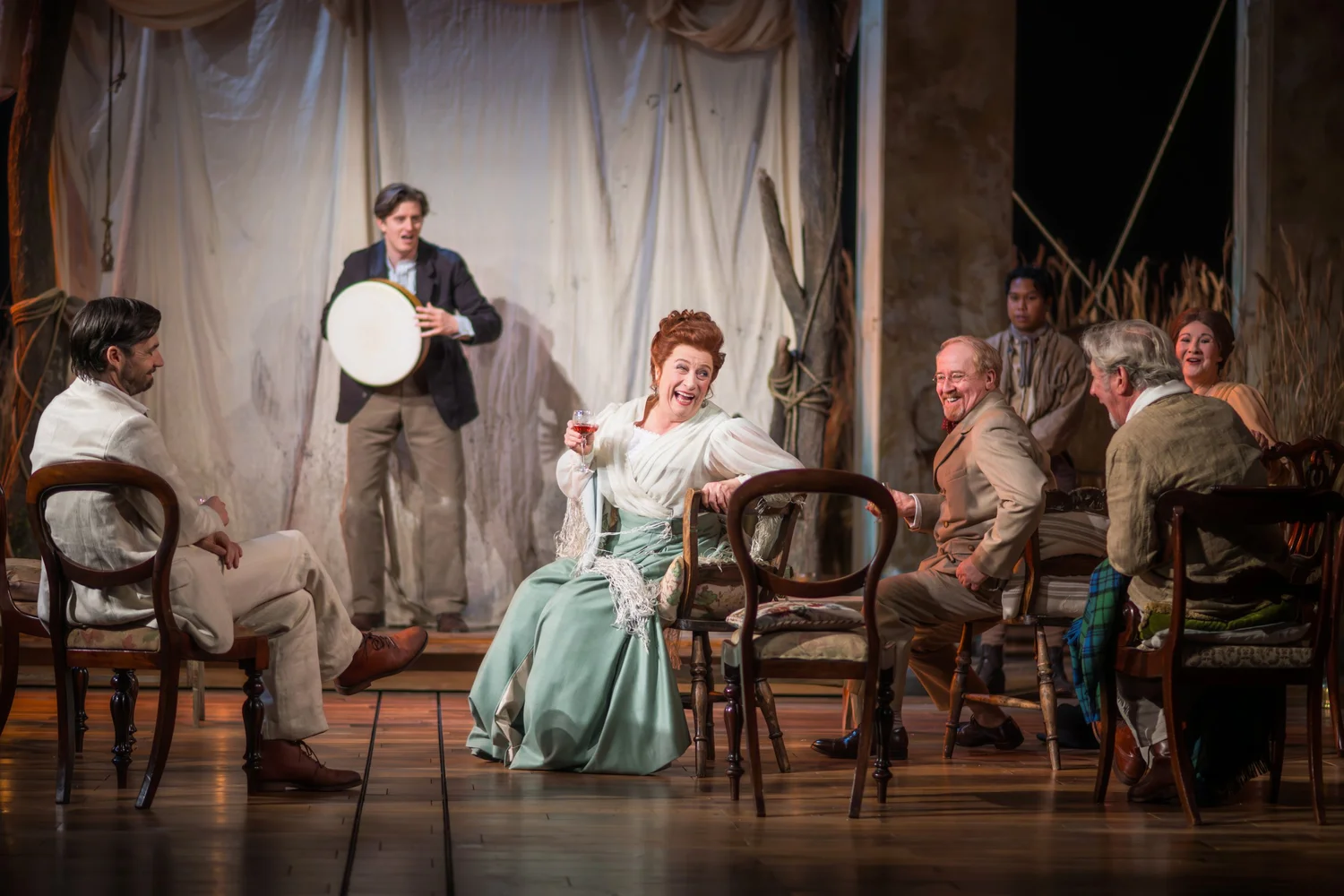Chekhov’s “The Seagull” has been produced countless times; each new production trying to put their own spin on it and create a new life. The play, set in 19th-century Russia, portrays love, art and ambition among a makeshift family of sombre souls who just want to be happy in life. Immersing you through the night within the setting, acoustic guitar music reminiscent of the time period is continuously played throughout the interval, always keeping the audience in a somewhat altered state.
The production design of the piece was a practical standout, being able to merge the interior and exterior seamlessly, creating an almost new form of space. The pieces used to create the set gives a naturalistic feeling to the staging, the cut-down trees for the stage frame leans into the minimalistic yet lived-in details of the production. Lighting is used sparingly but effectively, creating a soft blur between the actors and the set, blending them into a singular essence. As the play proceeds, the set becomes darker but still keeps its sense of warmth through the onstage lighting. What struck me was the walls, multiple layers of paint looked like they were peeling away from each other, with what looked like mould coating the bottom few inches, like it’s about to prey and captivate the wall itself.
Like the set, the costumes take a similar arc. The first act has everyone in warm, muted colours, the plain style of the clothing carries delicate details almost hidden within, hand-stitched embroidered hems and a bought patterned neck tie, reflecting the character’s social classes and the aspiration for climbing them. The gradual dimming of the colour palettes from scene to scene mirrors the characters’ hope, their ages are catching up with them, and what they wished for in their younger years can never be. Irina is the only one who keeps within her colour palette throughout, showing her inability to realise her disillusionment in life and fully connect with her son.
Caroline Quentin’s turn as Irina is quick witted whilst never going over into the line of absurdity and over-exaggeration. The dry comedic timing, which feels almost amplified through the adaptation by Mike Poulton means that nothing lands flat for her. The likeminded John Bett gives a performance of Sorin which can be almost likened to Ian McKellen, carrying a large chunk of the show on their shoulders. Whilst the younger members of the cast somewhat fail to live up to the same standard, most of their performances felt very university-level, but as someone who has never seen anything by Chekhov, it’s hard to determine if this is an issue with the script or the acting. However, Harmony Rose-Bremner’s Nina came alive in the final scene; her optimistic nature from earlier in the play has been stripped away, now her body and more substantially her eyes, provide an intimate look at her mental downfall.
The warmth provided by the physical aspects of the piece creates a false sense of security for the audience, making us believe that maybe at least someone will be happy at the final beat. The stand-out performance of Caroline Quentin, who stayed in character the entire piece, especially when the lights came on for the curtain call, mouthing “What was that noise?” It was unclear if this was intentional but made me feel worse for Irina for those extra few moments. Whilst it wasn’t anything completely new or unique, the Lyceum’s production of “The Seagull” plays it safe yet falls that little bit too flat to be overly special.
The Seagull plays at Edinburgh Lyceum Theatre until November 1st.
★★★
